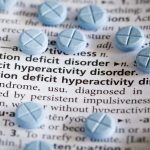
When an earthquake struck the center of Morocco earlier this month, killing nearly 3,000 and injuring thousands more, no one was expecting it. That sudden rapid shaking of ground as the rocks underneath the earth shift can happen anywhere, but higher-risk areas in the United States include Alaska, California, Hawaii, Oregon, Puerto Rico, Washington and the entire Mississippi River Valley. In their aftermath, earthquakes can cause fires, tsunamis, landslides and avalanches.That’s why the best time to prepare for such a disaster is before it happens, according to the U.S. Federal Emergency Management Agency (FEMA). FEMA offers some tips for preparing for an earthquake. Start preparing by creating an emergency plan that includes an out-of-state contact, FEMA suggests. Know where your family will meet if you get separated. Have a supply kit that includes enough food and water for several days, a flashlight, a fire extinguisher and a whistle, FEMA advises. Supplies can be expensive, so it’s fine to slowly build them up. Make your home a safer place in the event of an earthquake by securing heavy items, such as bookcases, refrigerators, water heaters, televisions and items that hang on walls. Store heavy and breakable items on low shelves. Fix any structural problems at home that could collapse if there was an earthquake, FEMA recommends. Get earthquake insurance, if you can. Standard homeowner’s insurance does… read on > read on >


















